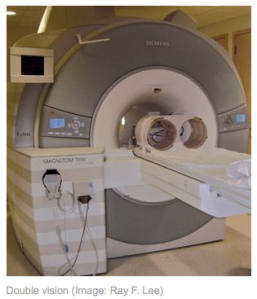Today’s New Scientist features a write-up on a new research tool for studying human social interaction, a dual-headed fMRI scanner.
 This tool will enable new research on how our brains light up as we socially interact–not only through being exposed to video of a loved one, as current research features, but also through the tactile and visceral experience of tangible presence.
This tool will enable new research on how our brains light up as we socially interact–not only through being exposed to video of a loved one, as current research features, but also through the tactile and visceral experience of tangible presence.
Ray Lee, of Princeton’s Neuroscience Institute is credited with the lead on this work, and here is how it is described in IEEE:
One of the major functions of the human brain is to mediate interactions
with other people. Until recently, studying brain social interactions
has not been possible due to the lack of measurable methods to observe
two interacting minds simultaneously. We have developed a novel
dual-head MRI coil that can scan two subjects’ brains simultaneously
while the subjects are socially interacting in one MRI scanner.
Meanwhile, a novel scheme for decoupling two quadrature coils (not
surface coils) is introduced and validated.
____________________________________
Note: Also posted on the IFTF blog, FutureNow
Leave a comment